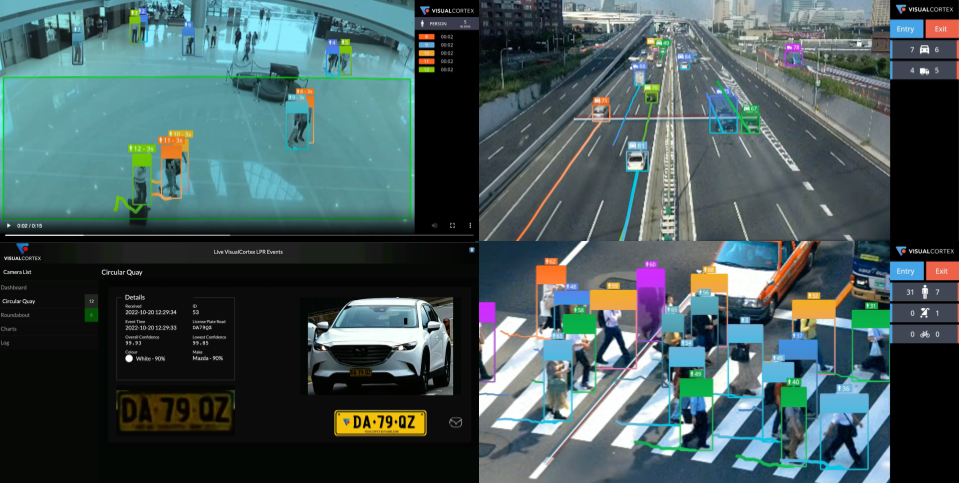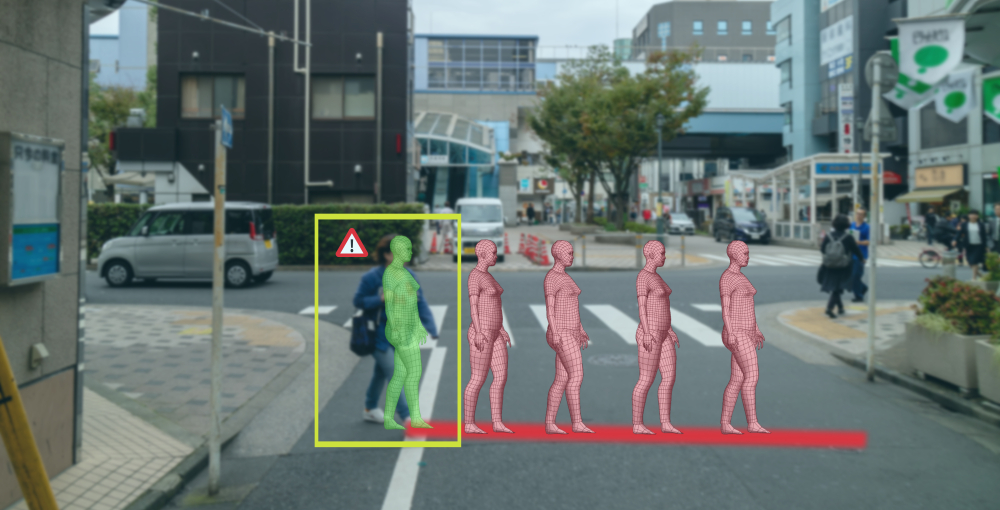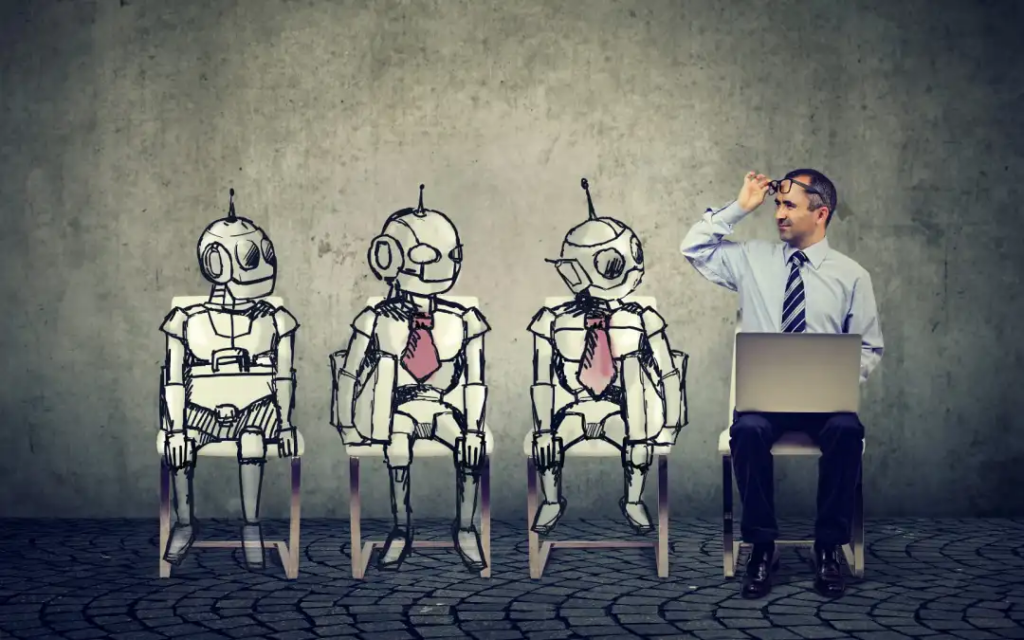Identifying video analytics use cases
New things can be scary: From trying that extra spicy vindaloo simmer sauce, to submitting your tax return on time.
Much of that trepidation comes from not knowing whether the juice will be worth the squeeze. Similarly, many businesses aren’t sure how to go about identifying video analytics use cases – the challenges to which computer vision technology should be applied in order to yield impactful real-world results.
A panel of industry experts, including VisualCortex’s Patrick Elliott (CEO and Co-Founder), sat down at Sydney’s 2023 Security Exhibition & Conference to unpack the question as part of a broader discussion – Using Artificial Intelligence to solve real-world customer challenges.
Identifying video analytics use cases: Does anybody in the business actually care?
John Bigelow, Editor at Security Solutions Media
Thank you very much. And thank you very much for joining us. Now, if you see me referring to my phone, it’s just because I have questions on here. So I’m not actually just looking at Tiktok because I’m bored. It’s more about setting the stage for what we’re doing.
John Bigelow
And obviously, the discussion today is really focused around, as the name suggests, understanding how we can use AI to solve real-world challenges. And I guess the best place to start is, first of all, understanding how do we identify what the real-world challenges are? Because too often, and I’m sure you’ve all experienced it with your own customers, we see people ploughing hundreds of thousands, if not millions, of dollars into a particular solution, or an idea, or a problem — only to find out later on, when the consultant comes in, or whoever it may be, that’s actually not the challenge that they need to be solving. Or, it’s not the problem that they need to be looking at. So I’m going to start off by throwing to Patrick to my right, and asking, first of all, in your experience, how do we identify what is the correct challenge that we need to be trying to solve?
Patrick Elliott, CEO and Cofounder at VisualCortex
Yep, thank you. Good afternoon, everybody. I think the fundamental requirements for anything to define if it’s a real world challenge, is [this]: Who is it important to, right?
Too often we let the technologists go and play with stuff and they think it’s great, and it’s fun. And they do the minimum POC, or a pilot, or the art of the possible. It’s not good enough in the real world. So if you’re worried about somebody, [something] that’s like a slip and fall, people hurting themselves in a public [place], 67% accuracy — that may be a Proof of Concept — it’s not worth it. It’s not good, because it’s not going to get the result.
So having a stakeholder, whether it’s a business stakeholder, or somebody who’s responsible [for achieving a business outcome with technology], or whether it’s a compliance reason, [is critically important]. And, actually just focusing on what the outcome needs to be. So are we detecting people? Are we detecting people falling? Or is it ideally about detecting what’s causing them to fall? But, really working that out prior, and then making sure that — if you are doing a Proof of Concept, or a pilot — that it’s the starting point of an outcome and it’s not just the toe in the water. Because, it costs millions of dollars.
Patrick Elliott
We spent a couple of million dollars building an outcome. We knew it was going to work because we’ve tested it. But for us it was worth it, because we can make it a repeatable use case for customers around the world. And I think if you’re going to do this as an organization, you have to think about what is the true outcome. What do we want to accomplish? What are the true costs? And I think the other big thing is, is it a build? Do we build it? Or do we actually look at what’s already out there? Too many people, and we see it all the time, too many people are trying to create a copy of another thing that somebody else has seen. So it has to be: A strong owner, strong outcome, with real results expected.
Identifying video analytics use cases: Is it freeing people to do more valuable work?
John Bigelow
Michael, as a solutions architect for NVIDIA, you spend your entire life developing solutions and helping customers identify solutions. So in your experience, when it comes to identifying what are the real-world challenges, do you have criteria that you apply to that? How do you help your customers identify what is the actual challenge that needs to be solved?
Yeah, and it’s the important question. So obviously, listening to the customer, but taking a variety of customer experiences and bringing them to, you know, whoever we may be speaking to… I find there’s two main aspects of this real-world application piece:
Michael Lang
One is usually a financial aspect, and there’s a very balanced scorecard there, which falls into two categories: Are you making money or saving money? And then what the cost is to achieve that, and is the way you’re achieving that fundamental to your business? Or are you adopting a technological piece that is too much of a challenge for you to manage? And again, there’s outsourcing and all sorts of things that can deal with that.
Michael Lang
The other side of that, and I’ve seen a few customers take the perspective of, we’re going to take the people focus. So if we look at what AI does, one of the goals is to do things that other people can’t do, or free people up to do the [more] valuable things that [only] people can do.
So it could be something as simple as, in a fast food chain, you can analyze all the tables here, see where there’s dirty cups and the like, and where they need to be cleaned-up. We need a critical mass; ping somebody out the back [to] come do it, rather than have to check it every five seconds. Something like that may accelerate what they do, but it makes it easy for them to do other things and add value to the business. And that’s whether you’re a knowledge worker, that’s whether you’re a security guard. No matter what you are, [here’s the question]: What is the best thing that I can do to be moving the needle?
Identifying video analytics use cases: Focus on the hole, not the drill
John Bigelow
And Aaron, [you’re] someone who’s spent a significant part of the last few years pioneering solutions in the facial recognition space. Again, same question to you. We see time and time again, there’s a Harvard professor by the name of Clayton Christensen, who developed ‘Jobs to Be Done‘ theory, [and] the analogy he uses is [this]: If I go to Bunnings, to buy an electric drill, I don’t actually need an electric drill. The job I’m trying to get done is I want a hole, right? So you’ve spent a huge amount of time developing solutions around facial recognition and all sorts of things. How do you help the customer identify what it is that they’re actually really trying to do? And in the case of the drill, it’s not a drill, they want a hole, but they think they need a drill. How do you help them get there?
Afternoon, everyone. Yeah, look, I think, as we go on this journey with customers, where you start and where you end-up are two completely different places. And we get a lot of initial interest around a concept. And Pat spoke about looking to understand what the outcome is. But the journey that you go on, often looks very different from the beginning to the end. My experiences, especially with facial recognition, [is that] there’s a lot of interest up-front, but then you start actually drilling into what the specific use case and the outcome is that you want… And then you start taking a very, very different line.
Aaron Terrey
I think one of the big challenges [is] different stakeholders within the business. So you’ll start out with maybe some interest through the security team, because it’s a camera that ultimately, you know, wants to provide some sort of AI outcome or computer vision outcome. And then you start getting involved with different parts of the business. So legal compliance, you know, what are you allowed to do? What are you not allowed to do? So, the journey with customers can be sometimes a lot more intense. A lot more different to what you start out as — especially if you start with the security team, getting legal involved, getting compliance involved. That can look very different at the end [of a video analytics engagement or project].
Aaron Terrey
I think face rec is one of the really good examples of that, where, you know, we’re seeing a lot of stuff in the press at the moment, about the negative side of facial recognition. And there’s some really good examples of, beginning-to-end, where we’re learning with some of our customers now that we possibly should have got, you know, the Privacy Commissioner and the human rights people involved earlier on. [As well as, it’s good practice to], get the customers on side [with that approach early on], and be very transparent on what that looks like from the get-go. And that is a really good example of how it can end so differently to how it began.
Where to next?
Keen to hear more? Check out the full panel discussion – Using Artificial Intelligence to solve real-world customer challenges – here: https://visualcortex.com/2023/11/29/solving-real-world-challenges-with-video-analytics-software/
About VisualCortex
VisualCortex is making video data actionable in the enterprise. Its Video Intelligence Platform provides the stability and flexibility to productionize computer vision technology at scale. Able to be used for any video analytics use case in any industry, VisualCortex’s production-ready cloud-based environment transforms video assets into analyzable streams of data.
The VisualCortex platform delivers the artificial intelligence smarts, governance and usability, enabling organizations to connect any number of video streams, repositories and use existing commodity hardware. An intuitive user interface, out-of-the-box reporting, range of configurations and integrations empower non-technical people to produce, analyze and act on insights derived from computer vision throughout the enterprise. Organizations can easily combine these AI-generated video insights with other data sources and systems to facilitate both real-time operations and strategic analysis. The VisualCortex Model Store also provides a secure marketplace for customers, partners and independent machine learning experts to share quality controlled computer vision models.
For more information, visit www.visualcortex.com
For regular updates, follow VisualCortex on Twitter (@VisualCortexApp), LinkedIn (VisualCortex), YouTube (VisualCortex) and Facebook (@VisualCortexApp).
For regular industry news and analysis, subscribe to VisualCortex’s mailing list here: visualcortex.com/contact-us








